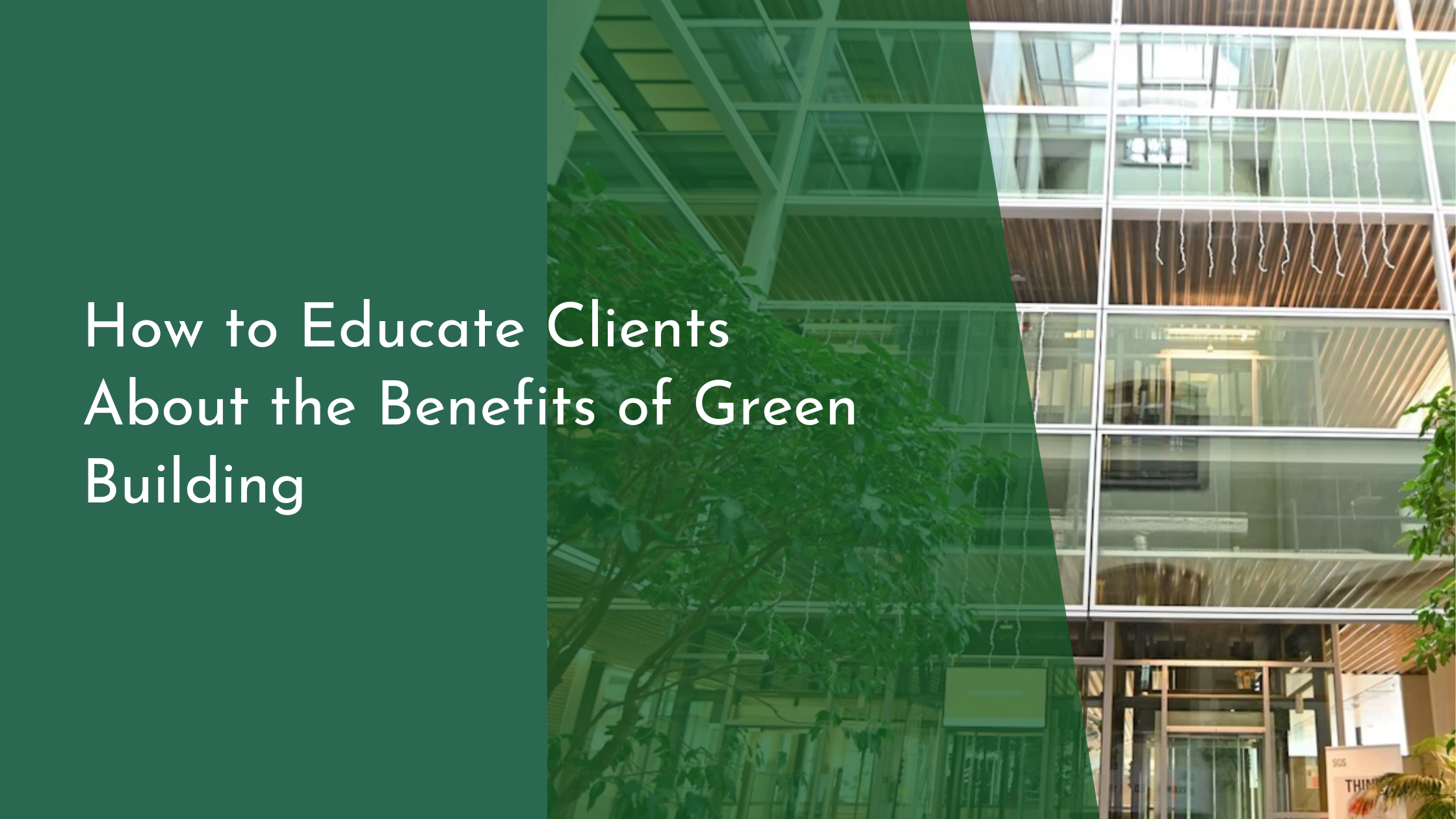How to Educate Clients About the Benefits of Green Building
In today’s environmentally conscious world, green building practices are gaining momentum. Yet, many clients still need to be educated about the myriad benefits of sustainable construction. As professionals in the field, it is essential to articulate these advantages clearly and persuasively. This article delves into key strategies for educating clients on green building, focusing on understanding the basics, highlighting environmental and economic benefits, and engaging clients with compelling success stories.
Understanding the Basics of Green Building
The first step in educating clients about green building is to break down its core principles. Green building involves the use of eco-friendly materials and processes that enhance energy efficiency, reduce waste, and promote sustainability. Explain to clients that these buildings are designed to have a minimal impact on the environment while maximizing resource efficiency. This includes aspects like sustainable site planning, water management, energy efficiency, and the use of materials with lower environmental impacts.
In addition to the core principles, it is essential to introduce clients to various certifications and standards that govern green buildings, such as LEED (Leadership in Energy and Environmental Design) or BREEAM (Building Research Establishment Environmental Assessment Method). These certifications assure clients of the building’s sustainable credentials and often add to the property’s value. By understanding these basics, clients can appreciate the structured approach underlying green building and its commitment to environmental stewardship.
Highlighting Environmental Advantages
A significant draw of green building is its positive impact on the environment. By explaining how sustainable buildings reduce carbon footprints and conserve natural resources, clients can see the tangible ecological benefits. For example, green buildings often incorporate renewable energy sources like solar panels, reducing dependency on fossil fuels. They also use efficient water systems and sustainable materials, which leads to less waste and pollution.
Educate clients on the broader environmental impacts, such as improved air and water quality. Sustainable buildings typically feature better insulation and air filtration systems, which enhance indoor air quality—a benefit that translates into healthier living or working conditions for occupants. Highlight the role of green buildings in fostering biodiversity by integrating green roofs and native landscaping, thereby creating habitats for local wildlife. This holistic view helps clients understand that their investment contributes to a healthier planet.
Demonstrating Economic Benefits
Beyond environmental advantages, green buildings offer compelling economic benefits that resonate with cost-conscious clients. One of the most persuasive points is energy efficiency. Green buildings are designed to consume less energy, leading to significant savings on utility bills over time. Clients can often recoup their initial investment through these savings, making green building a financially sound decision.
Another economic advantage is the potential increase in property value. As the demand for sustainable living spaces grows, green buildings often command higher resale prices and rental rates. Inform clients about potential tax incentives and rebates available for green construction, which can further offset costs. Additionally, sustainable buildings tend to have lower maintenance costs due to the durability of eco-friendly materials and innovative technologies used, providing ongoing economic benefits.
Engaging Clients with Success Stories
One of the most effective ways to educate clients about green building is to share success stories from previous projects. Real-world examples demonstrate the practical benefits and viability of sustainable construction. Highlight projects where clients have experienced substantial energy savings, improved indoor air quality, or increased tenant satisfaction. These stories can make the advantages of green building more relatable and credible.
Additionally, showcase projects that have achieved recognition or awards for their sustainability efforts. This not only underscores the prestige associated with green building but also illustrates the potential for positive public relations and market differentiation. Sharing testimonials from satisfied clients can further emphasize the personal and professional gains realized from investing in green building practices. Such narratives provide a powerful tool for engaging clients and inspiring their commitment to sustainability.
Educating clients about the benefits of green building requires a combination of factual information and compelling narratives. By thoroughly explaining the basics, highlighting environmental and economic advantages, and sharing success stories, professionals can effectively convey the value of sustainable construction. As awareness and demand for eco-friendly buildings continue to grow, such education efforts not only benefit individual clients but also contribute to a more sustainable future for all.

